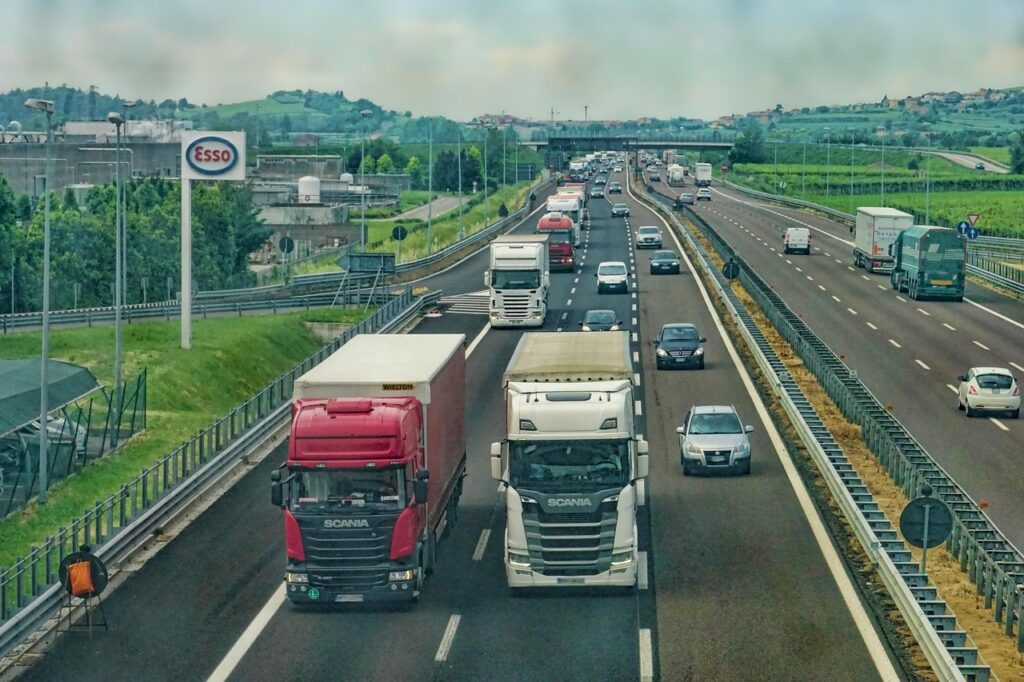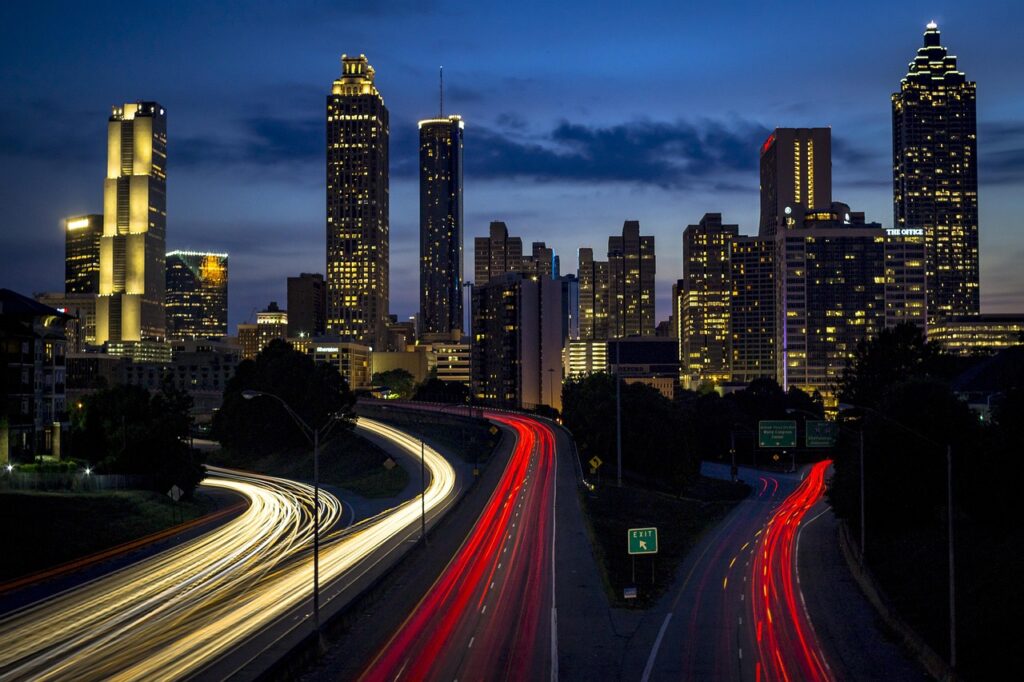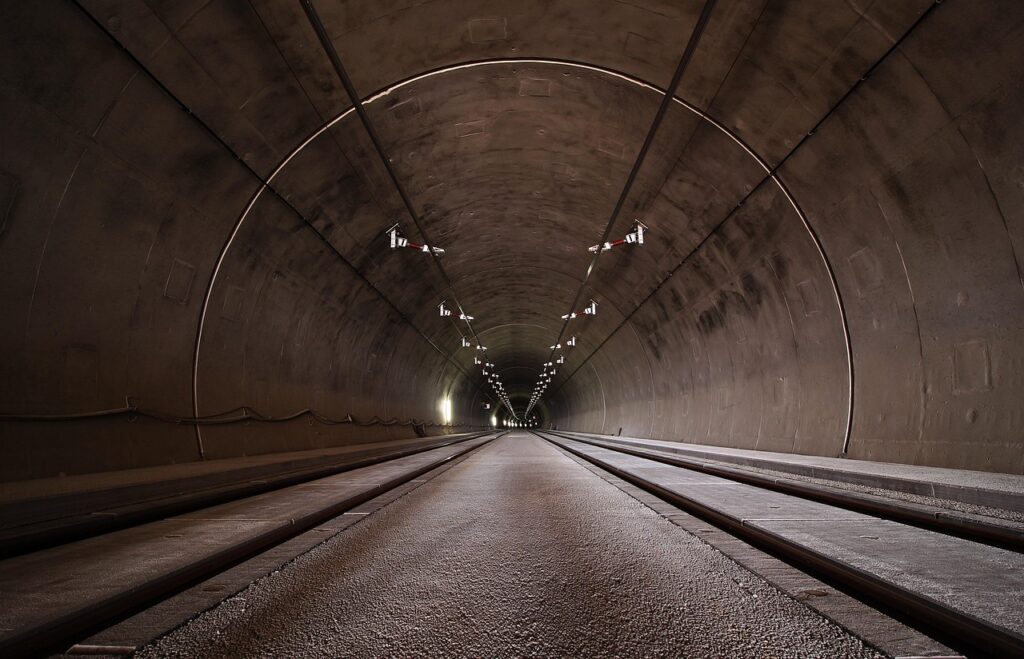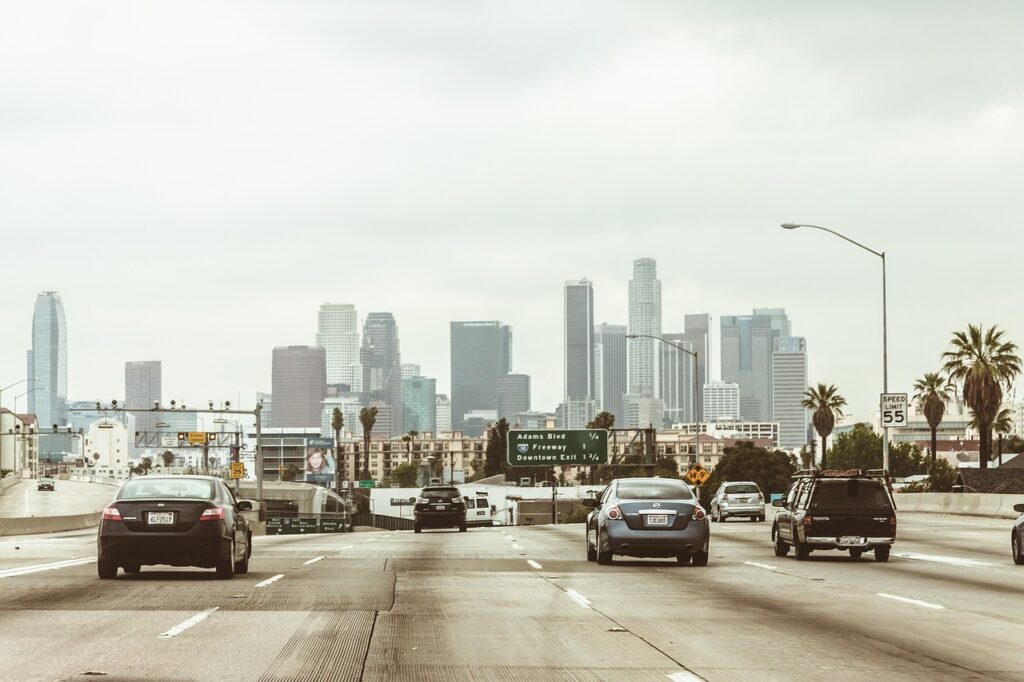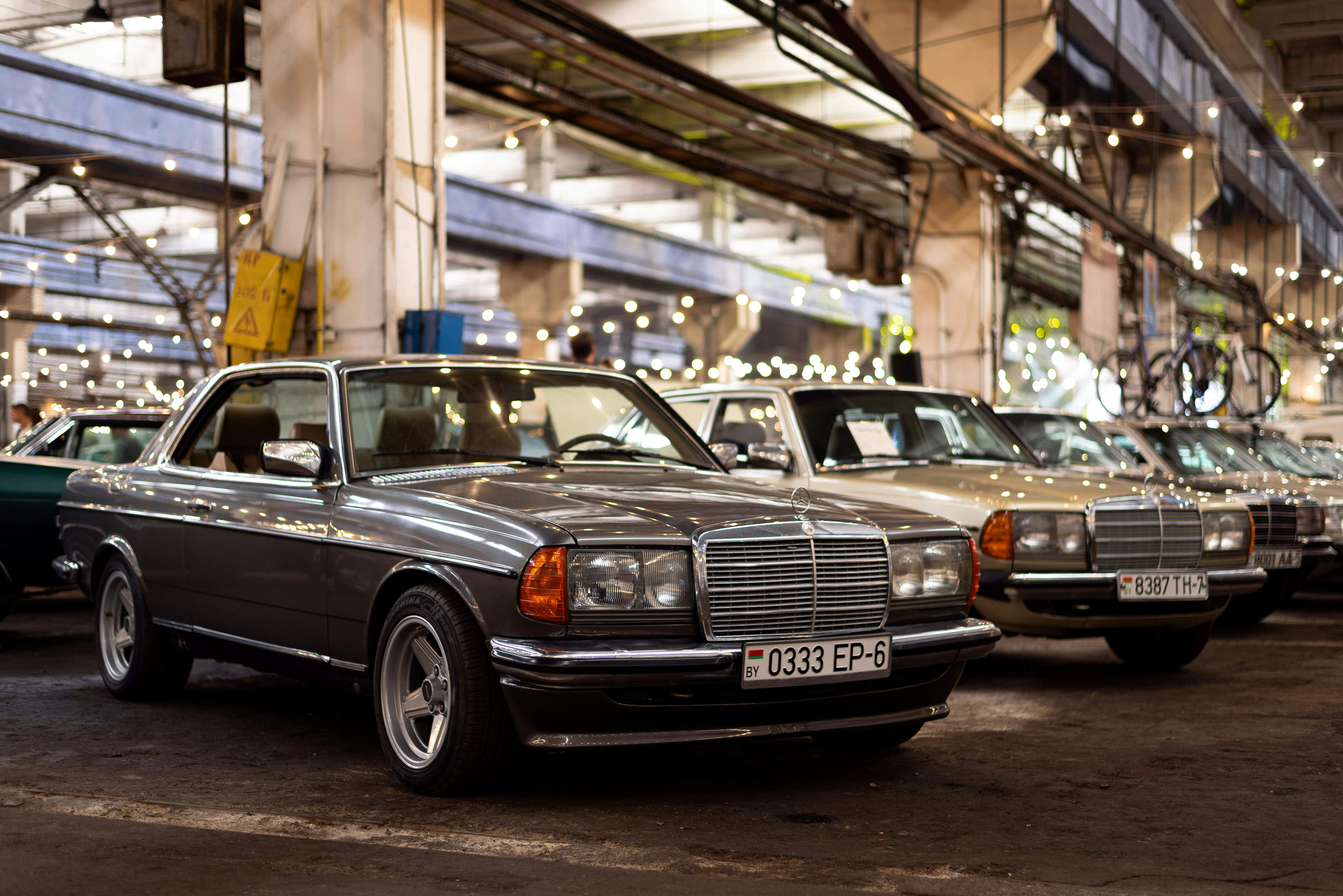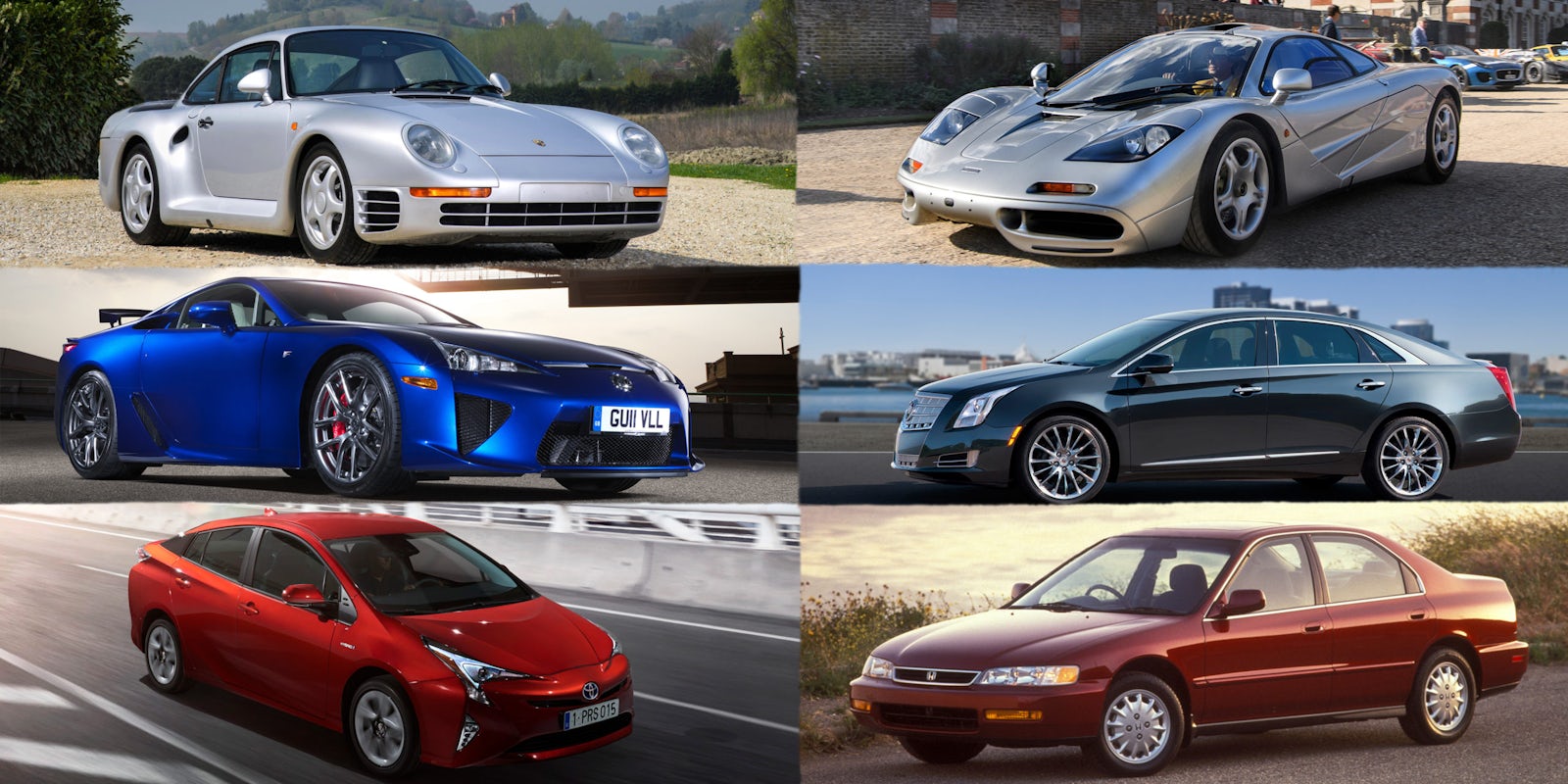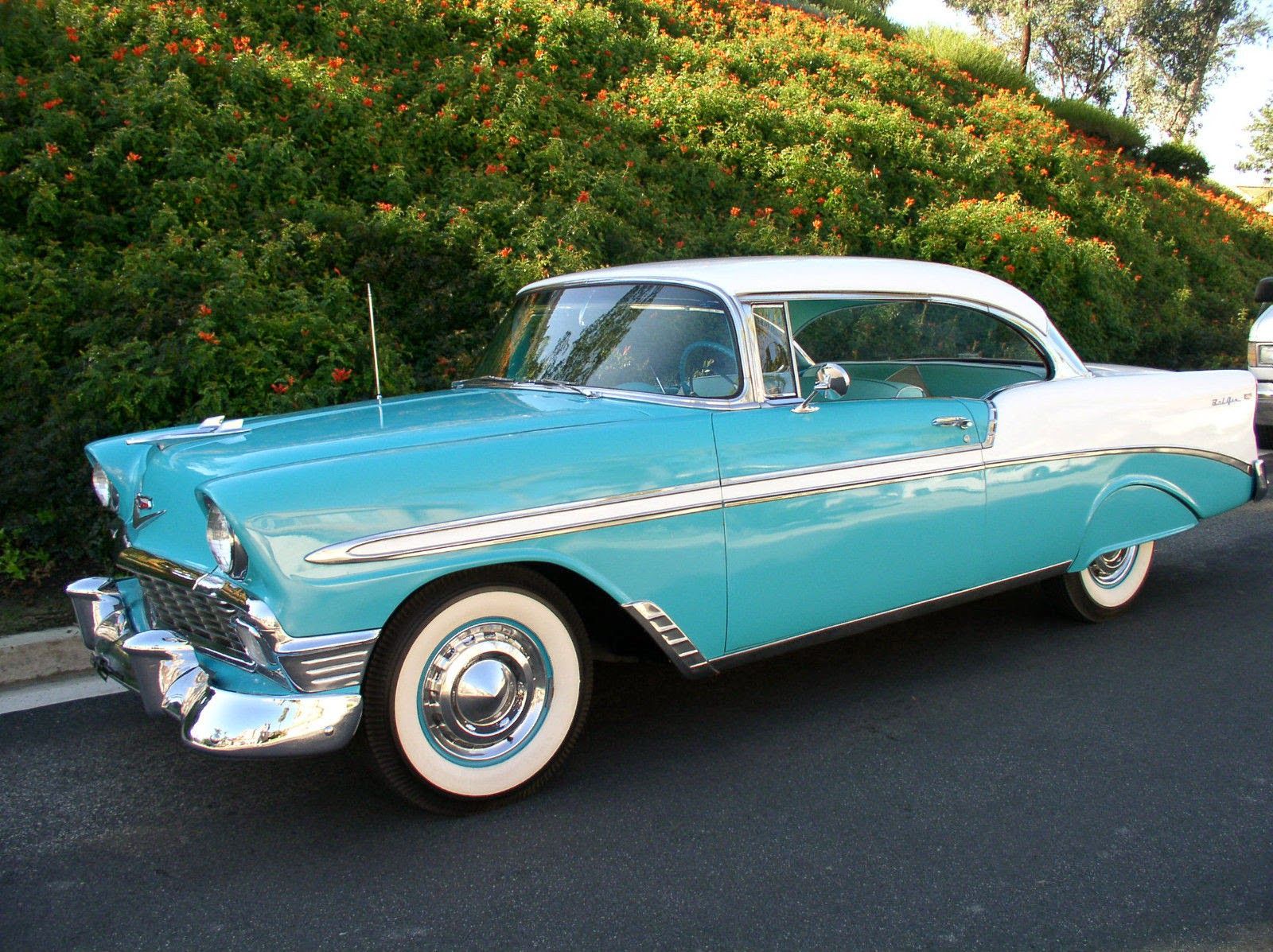Okay, let’s be real for a second: most of us, if asked, would probably say we’re pretty good drivers. Especially those of us who got our licenses a decade (or several!) ago. We navigate the daily grind, handle tricky merges, and generally feel like we’ve got this whole road thing down. But here’s the kicker: while not all ‘bad’ driving habits lead to fatal accidents, they can definitely result in traffic violations, put undue stress on our beloved cars, and, let’s face it, make everyone else on the road want to pull their hair out. So, are you ready to face the truth about those little quirks behind the wheel?
It turns out, paying attention to someone’s driving skills and habits can tell you a *lot* about them – way more than just if they can parallel park. In recent years, a fascinating new field called traffic psychology has emerged, able to decipher a good deal about someone’s personality based on how they drive and their behavior around their cars. It’s like a secret language of the road, and we’re about to crack the code.
So, buckle up! We’re about to take a deep dive into some of the most universally detested driving habits out there. We’ll uncover not just what these behaviors are, but also what they might secretly reveal about the person behind the wheel, according to science and common sense. Get ready to laugh, maybe cringe a little, and definitely think about your own driving next time you hit the asphalt. Let’s unmask these road rogues, starting with the very first seven habits that grind our gears!

1. **Not Yielding to Pedestrians in Crosswalks**Imagine this: you’re walking along, minding your business, and you step into a marked crosswalk, fully expecting a vehicle to stop. Then, *zoom!* A car whizzes by, seemingly oblivious (or worse, indifferent) to your presence. This isn’t just rude; it’s a huge safety hazard and, frankly, a massive red flag about a driver’s mindset. It’s not just about obeying traffic laws; it’s about basic human consideration.
Someone who consistently fails to stop or yield to pedestrians might just be sending a clear signal that they think more highly of themselves than they do of others. They might genuinely believe their time is more valuable than yours, or perhaps they view themselves as being above the everyday rules that apply to mere mortals. It’s a subtle but powerful display of entitlement on the road.
And guess what? Research backs this up! A study from the University of California, Berkeley, made a fascinating observation: “none — not one — of the cars in the ‘beater-car category’ drove through the crosswalk, endangering the lives of the pedestrians during their studies.” However, the same couldn’t be said for those in flashier rides. “People who drove luxury or premium cars were not nearly as observant of the traffic laws,” the study noted. Talk about a revealing moment!
So, next time you see someone commit this particular road sin, take a moment to observe. Are they completely lost in thought, maybe distracted by all the fancy gadgets twinkling in their high-end car, or perhaps too busy tapping away on their smartphone? Or is it a deeper issue of simply not caring? Either way, it’s a habit we all need to ditch.
Read more about: Understanding the Road: Unpacking 14 Aggressive Driving Habits and Their Real-World Impact
2. **Not Giving the Right of Way**Ah, the classic right-of-way conundrum! You’re at an intersection, it’s clearly your turn, or you’re already in a lane, and someone just… goes. It’s not just a minor annoyance; it disrupts the flow of traffic, creates confusion, and can quickly lead to dangerous situations. This isn’t a game of ‘who blinks first’; it’s about orderly progression and respect.
There’s a higher likelihood, according to observations, that someone behind the wheel of a luxury vehicle will act as if they are inherently more important than others on the road. It’s a strange phenomenon, almost like a version of being classist, but playing out in real-time on the asphalt. The assumption is that their journey, their schedule, and their status trump everyone else’s.
A 2023 study delved deep into this, exploring the differences in drivers’ right-of-way attitudes and how those attitudes predict actual driving behaviors. The results were pretty clear: the higher a driver’s ‘correctness’ in their right-of-way attitudes, the higher their level of prosocial driving behavior – meaning they’re more considerate – and the lower their level of aggressive driving behavior. It’s all connected, folks!
If you ever spot someone exhibiting this kind of ‘my way or the highway’ behavior, here’s a little secret: pay close attention to how they treat service staff, like a valet, waitstaff, or a porter. If they’re rude or dismissive to those individuals, you might just be looking at someone who’s showing clear signs of narcissism. Driving really does reveal all, doesn’t it?
Read more about: Your Digital Fortress: 12 Google Privacy Settings You Absolutely Need to Tweak Right Now
3. **Forgetting the ‘Thank You’ Wave After Merging or Being Let In**This one is so simple, yet its absence can feel like a tiny stab to the heart of road courtesy. We’ve all been there: you slow down, create a gap, or adjust your speed to let someone merge into your lane, or maybe they just cut in and you were cool about it. Then, you wait for it… that little universal ‘thank you’ nod or wave. And it never comes. Crickets. Just the back of their car driving away into the sunset.
That quick ‘thank you’ wave, as someone yields to you, is such a powerful, yet understated, indication of acknowledging another person’s thoughtfulness. It’s a small gesture that screams, “Hey, I see you, I appreciate you!” Its absence, however, often points to a feeling of entitlement, as if the space you generously gave them was simply their due, rather than an act of kindness.
Someone who can’t muster up that quick, universal ‘thank you’ nod likely doesn’t have the best road etiquette. And let’s be honest, bad manners on the road rarely stay confined to the car. These small displays of discourtesy often spill over into how they interact with people in all other aspects of their lives, off the road, too. So next time, give that wave! It costs nothing and makes a world of difference.
Read more about: Vanished ’00s Fails: Can You Still Spot These Iconic Relics and Forgotten Trends Only a True Collector Remembers?
4. **Inconsistent Speed and Brake Pumping**If you’ve ever been a passenger with someone who constantly pumps on and off the brakes, or simply can’t seem to maintain a consistent speed, you know this pain. It’s one of the most annoying things to suffer through as a rider, often making you feel car sick and question the driver’s basic skills. It’s a sign that a person hasn’t quite mastered the subtle art of smooth driving yet.
This isn’t just about passenger comfort, though. According to research from The American Automobile Association, this habit is a strong indicator of poor braking technique. It can severely disrupt the driver behind you, leading to unnecessary jerking motions and repeated pressure on *their* brakes, especially when it’s not needed in most driving situations. Plus, for your own vehicle, it’s a fast track to prematurely wearing down your brake pads and rotors – ouch!
For most modern cars, the general wisdom is that consistently applying firm, steady pressure to the brake pedal is far more effective and smoother than that old ‘pumping’ technique (which was actually for older cars without anti-lock brakes!). So, if you’re still pumping away, it might be time for a quick refresher course.
Now, let’s be fair: there could be deeper reasons why someone doesn’t feel like a confident driver. Maybe they were in a car wreck as a kid and have some lingering PTSD around driving, affecting their ability to maintain steady control. Or perhaps they’re colorblind, and that makes them doubt their abilities to react swiftly and confidently to traffic lights and signs. It’s not always just a lack of skill; sometimes, there’s a story behind it.
Read more about: Understanding the Road: Unpacking 14 Aggressive Driving Habits and Their Real-World Impact
5. **Distracted Driving (Including Phone Use)**Distracted driving: it’s a phrase we hear constantly, and for good reason. It’s like the ultimate multi-tasking fail, and it covers a huge range of activities – from changing radio stations to munching on a snack, chatting with passengers, getting lost in thought, and, of course, the ever-present smartphone. This isn’t just annoying; it’s genuinely dangerous, and sadly, it’s everywhere.
Interestingly, research from the National Center for ADHD confirms that drivers with ADHD appear particularly at risk of distractions during periods of low stimulus or dull driving, such as long-distance highway cruising. So, while we might think of distractions as exciting new inputs, sometimes it’s the lack of stimulus that sends our minds wandering.
When it comes to our beloved smartphones, the data gets even more granular. A study focusing on the “Big Five” personality traits (openness, conscientiousness, extraversion, agreeableness, and neuroticism) found that people who score higher on conscientiousness and agreeableness are actually *more* likely to feel that urgent pull to reply quickly to texts or missed phone calls. This makes them surprisingly prone to distraction. And no shocker here: extroverts were found to use cell phones more often than introverts while driving.
Ultimately, no matter your personality type, it’s always, always better to put that phone away while driving. If you need navigation, or to manage music, or just want to catch up on a chat, let your co-pilot handle it. If you’re riding solo, use hands-free options or pull over safely. It’s not just the smart thing to do for your safety and everyone else’s; it’s a clear indicator of your maturity and responsibility on the road. Seriously, put the phone down!
Read more about: Understanding the Road: Unpacking 14 Aggressive Driving Habits and Their Real-World Impact

6. **Failing to Pull Over for Emergency Vehicles or Funeral Processions**Okay, this one really grinds gears. You hear the siren wailing, or you see the somber procession of cars, headlights on, signifying a funeral. Most of us instinctively (and lawfully!) pull over to the side of the road, giving way out of respect and necessity. But then there’s *that* driver who just… doesn’t. They cruise along, seemingly oblivious or, worse, deliberately defiant. It’s not just illegal; it’s a giant, flashing “red flag” for a multitude of personality traits.
This particular habit screams narcissistic behaviors. Someone who fails to yield to an emergency vehicle or a funeral procession often believes they are better than others, and that the laws – especially those requiring courtesy and deference – simply don’t apply to them. Their journey, their schedule, their perceived importance overshadows a critically important and universally recognized act of respect and public safety.
Now, sometimes there are less nefarious reasons, though still problematic. Drivers might not pull over because they genuinely didn’t notice the emergency vehicle due to distractions, or perhaps they misinterpreted the situation. Maybe they’re completely unaware of the law, or driving in such heavy traffic that maneuvering feels impossible. However, a 2020 study also points to deeper issues: in some cases, drivers “might also be in denial about the seriousness of the situation or feel a sense of urgency themselves, leading to poor decision-making.” So, while we hope for the best, this behavior still leaves us shaking our heads.
So, next time those sirens wail, or a funeral procession passes, remember: pulling over is not just the law; it’s a fundamental act of civic duty and human empathy. It shows you understand that some moments on the road are bigger than your personal destination.
Read more about: Understanding the Road: Unpacking 14 Aggressive Driving Habits and Their Real-World Impact

7. **Deliberately ‘Blocking the Box’**Ever seen it? The light turns yellow, you’re approaching an intersection, and you know the traffic ahead is completely backed up. A smart, courteous driver would stop *before* the intersection, even on a yellow, to avoid getting stuck. But then, the “box blocker” barrels through anyway, only to end up right in the middle of the intersection, completely preventing cross-traffic from moving when their light turns green. Ugh. It’s a recipe for gridlock and road rage!
Statistically speaking, that same team of researchers from Berkeley (the ones who analyzed a person’s prevalence for blocking the pedestrian walkway based on the type of car they drove) found a similar pattern here. Individuals who drive “nicer” cars tend to engage in this “blocking the box” behavior more often than owners of less prestigious vehicles. It’s almost like the car itself gives them a license to ignore basic traffic etiquette.
If a person consistently blocks the box, it speaks volumes about their priorities. It could easily show that they think their time is vastly more important than that of others, leading them to disregard the consequences of their actions for the flow of traffic and other commuters. Done repeatedly, this behavior isn’t just an accident; it’s a strong indicator of rudeness and a consistent display of poor judgment. It’s all about getting ahead, even if it means screwing over everyone else. Don’t be that driver!” , “_words_section1”: “1940
Alright, so we’ve already unmasked seven of those super annoying highway habits that make us all collectively groan. But hold onto your steering wheels, because we’re not done yet! There are even more frustrating antics playing out on our roads every single day, and trust us, they’re just as revealing about the person behind the wheel. Get ready to dive into the next batch of behaviors that grind our gears and reveal what’s really going on with our fellow commuters. Let’s roll!
Read more about: 14 Essential Rules for Safer Driving in Heavy Snow and Ice: A Comprehensive Guide for All Drivers
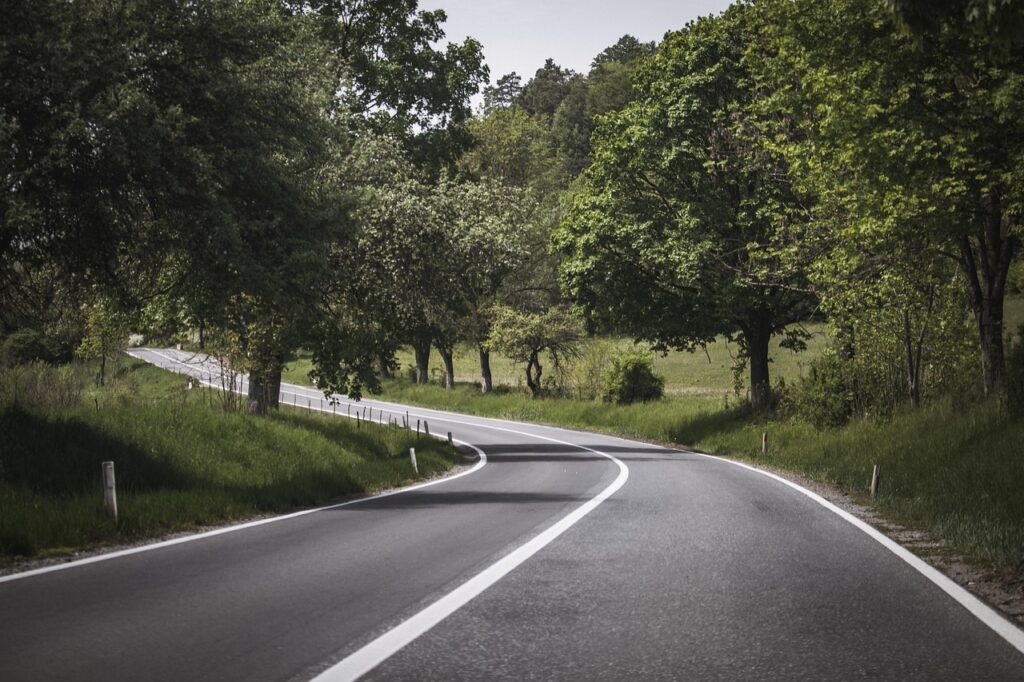
8. **Stopping on a Dime**Picture this: you’re cruising along, keeping a safe distance, and suddenly, the car in front of you slams on the brakes for seemingly no reason at all. We’re talking a full-on emergency stop when there isn’t actually an emergency! This kind of abrupt, unexpected braking isn’t just startling; it’s genuinely unpleasant for anyone behind them, forcing quick, stressful reactions.
Sometimes, this behavior might come from a driver who’s just really, really in a hurry, perhaps running late and driving with a frenetic energy. Or maybe they have poor depth perception, making it hard to judge distances accurately. It could even be a slow perception-reaction time, meaning they take longer to process what’s happening around them and respond. Whatever the root cause, it’s a big ol’ red flag for their driving confidence and awareness.
Consistently stopping like you’re trying to win a sudden-stop competition may also signify a deeper issue than just road skills. It can sometimes point to a lack of good time management skills in a person’s life, implying they’re always rushing or reacting at the last minute, both on and off the road. Either way, it’s a habit that puts everyone else on edge and wears out brake pads faster than you can say ‘whoa!’
Read more about: Your Digital Fortress: 12 Google Privacy Settings You Absolutely Need to Tweak Right Now
9. **Performing a ‘California Roll’ at a Stop Sign**Ah, the infamous ‘California roll’ – a move so common, it’s got its own nickname! This is when a driver approaches a stop sign, slows down a bit, but doesn’t actually come to a complete, full stop before proceeding. It’s like they’re saying, “I *acknowledge* the stop sign, but I’m not going to fully commit to its demands.”
Let’s be real, doing a rolling stop is just a bad habit, pure and simple. It often happens when someone is driving in an area they know like the back of their hand, which has made them a little lazy behind the wheel. They might feel like they’ve got the lay of the land, so what’s the harm in a quick roll-through?
The thing is, it’s a careless driving move that can have real consequences, especially if a pedestrian, cyclist, or another car suddenly appears. This habit isn’t just about breaking a rule; it might also be a sign of absentmindedness, where the driver isn’t fully engaged or focused on the task of driving. Being present and mindful at every stop sign is essential for everyone’s safety!
Read more about: Beyond the Graceland Gates: 14 Defining Chapters in the Extraordinary Life of Elvis Presley

10. **Not Signaling a Turn or Lane Change**Okay, here’s a hot take: every single vehicle on the road—yes, even those fancy luxury cars—comes equipped from the factory with turn signals. That handy little stalk on the steering column isn’t just for show! It’s there to let other drivers know your intent, so they can react safely and avoid an accident.
The only time it’s truly legal to skip your turn signal is when there are absolutely no other cars on the road. So, 99 percent of the time, you should be using that signal when changing lanes or making a turn. It’s not just a matter of basic road safety; it’s also how you avoid getting a moving violation that could put a dent in your wallet (and your driving record!).
If this is a persistent driving habit for someone, it can mean a few things. Maybe they’re a little sloppy in their attention to detail, or perhaps they’re distracted emotionally or mentally preoccupied with other things. Or, in some cases, it might stem from a feeling that they’re just “above the law” on this slight infraction. But honestly, a flash of the signal takes literally no effort and makes the road a much smoother, safer place for everyone.
Read more about: Tony Stewart’s Game-Changing Move: Elite Motorsports Secures Funding for Top Fuel Dominance in 2026
11. **Use of Aggressive Language or Gestures**Ever been on the receiving end of a shouted insult or a not-so-friendly hand gesture from another driver? Or maybe, just maybe, you’ve been the one dishing it out? Psychological scientists from Ohio State University and the University of Luxembourg actually teamed up for three studies to dig into whether narcissism could predict aggressive driving. Spoiler alert: aggressive driving causes more than half of all traffic accidents in the United States alone!
These researchers focused on individuals with what they call “subclinical levels of narcissism.” Essentially, if participants ranked themselves a 4 or 5 out of 5 for statements like “I like to be the center of attention” or “I am an extraordinary person,” they were flagged as likely to show more narcissistic traits. And guess what? There was a *high* correlation between these narcissistic individuals and aggressive driving behaviors!
This showed up in statements like, “I often swear when driving a car” or “When driving my car, I easily get angry about other drivers.” But it wasn’t just about the verbal outbursts. Participants who scored high on narcissism were also more likely to tailgate, speed, drive off-road, cross the center line into oncoming traffic, drive on the shoulder, and honk their horns excessively. So, that driver giving you the stink eye might be telling you a lot more about themselves than just their bad mood!
Read more about: From Classic Grandeur to Modern Marvels: The 14 Most Iconic Car Designs Shaping Automotive History, According to Experts

12. **Driving Slowly in the Far Left Lane (aka the Left Lane Hog)**Okay, let’s talk about one of the most universally annoying highway habits: the driver who cruises slowly in the far left lane. You know the one. This isn’t just an inconsiderate move; it’s a genuine safety hazard and a recipe for road rage. Recently, TikToker Jethroboogie (@jethroboogie) went viral with 2.1 million views for capturing a GMC getting tailgated by an impatient driver, all because the GMC was chilling in the fast lane.
So, why is driving slowly in the passing lane such a big deal? According to the law firm Allen, Allen, Allen & Allen, it’s actually one of the most dangerous things you can do on a highway! It causes other drivers to make sudden lane changes and take “unnecessary risks” just to get around the slowpoke. This habit also creates traffic delays, leading to congestion, longer travel times, increased fuel consumption, and excessive emissions. Plus, it makes other drivers absolutely furious, often causing them to engage in “aggressive or reckless behavior.”
FirstTimeDriver.com explains that while most states allow drivers to pass in the far left lane, many don’t allow slow drivers who aren’t actively trying to pass or turn to use it. “Keep right laws” are specifically designed to keep traffic flowing smoothly and prevent bottlenecks. When drivers decide to be “left lane hogs,” they inadvertently leave a trail of traffic and road rage in their wake. The golden rule here is simple: be aware of your surroundings, be courteous, and if someone wants to pass, move over! It’s a small act that makes a huge difference.
13. **Tailgating: The Pressure Tactic**Remember that TikTok video we just mentioned, where the Dodge Ram was dangerously close to the slow-moving GMC? That, my friends, is tailgating in action, and it’s a big no-no. Law firm Farris & Thomas describes tailgating as driving too closely behind the vehicle in front of you. This isn’t just annoying; it’s an aggressive and dangerous habit that dramatically reduces your reaction time if the car ahead brakes suddenly.
Tailgating is a prime culprit for the dreaded “domino effect of accidents,” where one crash caused by following too closely triggers a chain reaction involving multiple vehicles. Beyond the physical danger, it also creates massive stress and anxiety for the driver in front of you, increasing the chances that *they* might react recklessly. It’s such a pervasive issue that I Drive Safely, a driver’s education site, ranks it as one of their “Top 10 worst driving habits,” alongside ignoring traffic signs and not using turn signals.
Drivers often tailgate out of sheer impatience, foolishly thinking their proximity will pressure the car ahead to speed up or move over. Other times, it’s just plain inattentive driving, where someone isn’t consciously monitoring their following distance. Whatever the reason, it puts *both* drivers in a precarious position. The best way to ditch this habit is to embrace the “three-second rule.” As the car in front passes a fixed object, count “One-One-Thousand, Two-One-Thousand, Three-One-Thousand.” If you pass the same object before you finish, you’re too close! Ease off that accelerator and create some breathing room, especially in bad weather.
Read more about: Mastering the Road: 14 Expert Strategies to Safely Deter Tailgaters and Enhance Your Driving Safety
14. **Not Understanding Yield Signs**Let’s clear up some major road confusion, shall we? This one might seem basic, but it trips up more drivers than you’d think: the yield sign. Repeat after us, folks: *it’s not a stop sign!* Seriously, a yield sign is your cue to assess, not necessarily to halt completely.
When you approach a yield sign, your primary job is to check for traffic. If there’s no traffic around—zip, zero, nada—then you can totally blast through that intersection at full speed, safely, of course. The whole point is to adjust your speed so you can smoothly merge or enter the flow of traffic without having to come to a dead stop.
So, here’s the kicker: unless the traffic is super heavy, if you’re stopping at a yield sign, you’re actually doing it wrong. It causes unnecessary delays and confusion for everyone behind you. Understanding the nuance between a stop sign and a yield sign isn’t just about technical correctness; it’s about contributing to the fluid, efficient, and ultimately safer rhythm of the road. Let’s keep that traffic flowing!
Read more about: The Art of the Find: Real Simple Strategies for Discovering What Truly Matters
And there you have it, folks! The complete rundown of 14 highway habits that can turn even the calmest driver into a frustrated mess. From the subtle signs of absentmindedness to the glaring displays of narcissism, our behavior behind the wheel truly tells a story. But here’s the good news: recognizing these habits, whether they’re yours or someone else’s, is the first step toward making our roads a more predictable, courteous, and ultimately, safer place for everyone. Let’s all strive to be the kind of drivers who make the commute better, not worse. We know you’ve got this!





